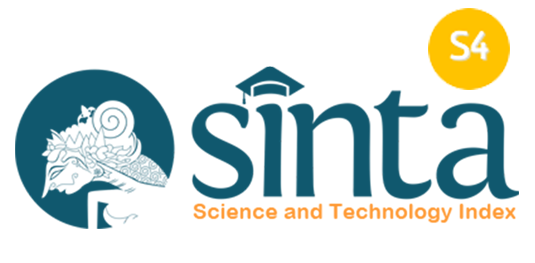ANALISA POSITIONING OBYEK WISATA ALAM DI DAERAH ISTIMEWA YOGYAKARTA BERDASARKAN BAURAN PEMASARAN JASA DENGAN MULTIDIMENSIONAL SCALING
Abstract
Abstract
Yogyakarta is one of the city's tourist destinations. A wealth of history and natural wealth makes Yogyakarta demand by both domestic and foreign travelers. Increased activity of this nature is related to the change in lifestyle of the people. The potential attraction of Yogyakarta is owned by the attractiveness of natural beaches, culture, history and heritage. Typology of tourist products in Yogyakarta is quite diverse, but still a lot in common with other areas, the lack of care, and lack of quality of the provision of infrastructure and so on. The management of tourism object using the pattern required strategic thinking ahead while adapting to the changes that occur. In order to combine coaching, development, and utilization need to set priorities. The purpose of this study was to analyze five well-known tourist destinations in Yogyakarta to set positioning in order to determine priorities based tourist services marketing mix. Attributes studied were 20 attributes which are part of the marketing mix of tourist services. The research method used is quantitative by using Multidimensional Scaling Analysis. Sampling was selected by random; the number of respondents was 104 people. The results obtained through a perceptual map is that 5 destinations in Yogyakarta is Parangtritis, Kaliurang, Baron Beach, Indrayanti Beach, and Goa Pindul perceived almost as by consumers with a range of values that are not too far away, while the average of the results it can be concluded that Parangtritis have the lowest perception and Indrayanti Beach has the highest perception.
Keywords: Tourism, Services Marketing Mix, Positioning, Multidimensional Scaling.
Full Text:
PDFReferences
Ghozali. Imam. 2006. Aplikasi Analisis Multivariate dengan Program SPSS. Semarang: Badan Penerbit Universitas Diponegoro
Hawkins et al. 2004. Consumer Behavior. New York: Mc Graw Hill
Ibrahim, Essam E & Gill, Jacqueline. 2005. “A Positioning Strategy for A Tourist Destination, Based on Analysis of Customers' Perceptions and Satisfactions“ Marketing Intelligence & Planning. Vol. 23 No. 2/3; pp. 172-189.
Kotler, Philip. et al. 2005. Principles of Marketing (4th ed.), Harlow: Pearson
Schiffman, Leon, & Kanuk, Leslie Lazar. 2008. Consumer Behaviour 7th Edition . Jakarta: PT. Indeks.
Soemarno. 2010. Desa Wisata. [Online]. http://marno.lecture.ub.ac.id/files/2012/01/Desa-wisata.doc (diakses 1 Juli 2014)
Stanton. 2001. Prinsip Pemasaran. Jilid 1. Jakarta: PT. Damar Mulia Pustaka
Supraptini, Nunuk. 2013. Bauran pemasaran: Strategi Pemasaran Pariwisata di Kabupaten Semarang. Jurnal Ilmiah Inkoma. Vol 24. No 24. pp 83 – 91.
Sutojo, Siswanto. 2009. Manajemen Pemasaran Edisi Kedua. Jakarta: PT. Damar Mulia Pustaka
Tjiptono, Fandy. 2005. Pemasaran Pariwisata Terpadu. Bandung: Angkasa
DOI: https://doi.org/10.31294/evolusi.v2i2.3149
ISSN: 2657-0793 (online). ISSN: 2338-8161 (print)














